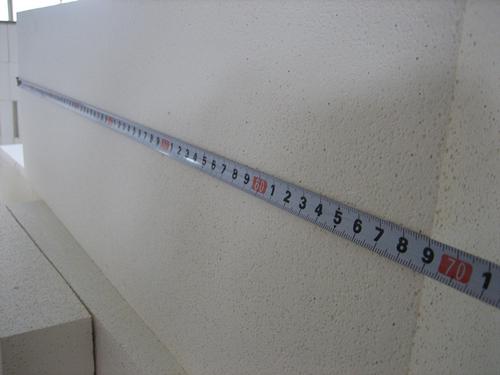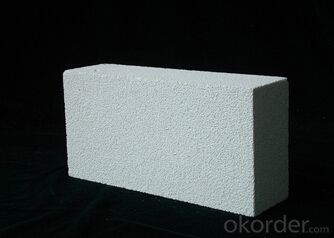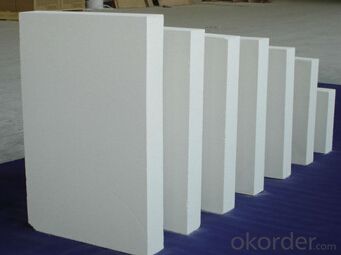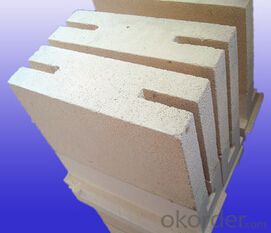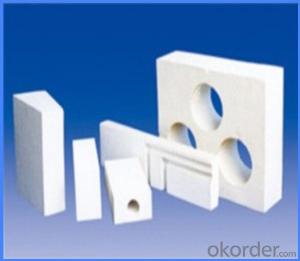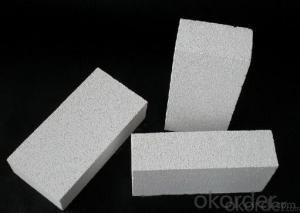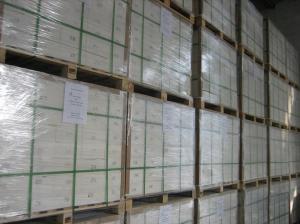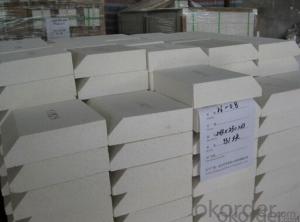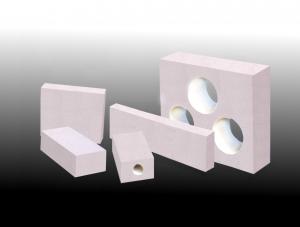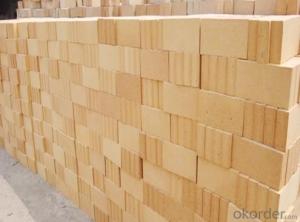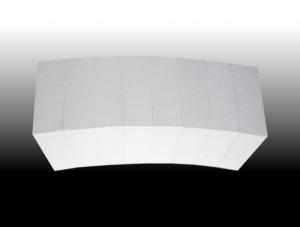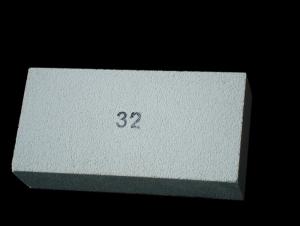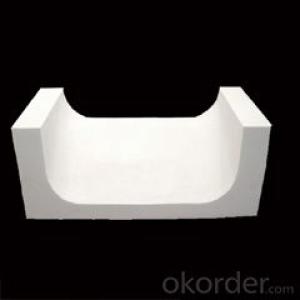Insulating Fire Brick - Mullite Jm 31 Refractory Brick
- Loading Port:
- Shanghai
- Payment Terms:
- TT OR LC
- Min Order Qty:
- 20 m.t.
- Supply Capability:
- 20 m.t./month
OKorder Service Pledge
OKorder Financial Service
You Might Also Like
General Information
CMAX insulating firebricks are classified under temperature between 1300℃ to 1700℃, manufactured from high purity alumina clay.
1. Lower content of iron, alkaline and impurities, good high temperature properties.
2. Homogeneous structure, light weight, energy saving because lower heat storage in the furnace during cooling cycles.
3. High strength, good thermal shock resistance under high temperature.
4. Precise sizes due to grinding and shaping after sintering, which meets the requirement of construction.
5. Max service temp: Up to 1730C (3160F)
Feature
Light weight and low thermal conductivity
Low heat storage
Low iron and impurities
High thermal shock resistance
Application of Insulating brick
Metallurgical Industry: blast furnace, hot blast furnace, heating furnace, etc..
Petrochemical Industry: ethylene cracking furnace, hydrogen furnace, the main furnace, heating furnace, etc..
Ceramic industry: roller kiln, kiln, etc..
Glass industry: glass furnace regenerator, etc.
Carbon industry: carbon furnace, etc..
Aluminum electrolysis industry: aluminum reduction cell, etc.
Other industries: tunnel kiln, shuttle kiln, etc.
Advantages of heat insulation brick
Low thermal conductivity: many air holes will bring good thermal insulation effect, energy saving.
High crushing strength: high crushing strength, volume stability.
Low heat storage: small heat storage, absorb more heat, energy-saving effect is obvious.
Technical Data
ITEM | GJM30 | GJM28 | GJM26 | GJM23 |
Classification Temperature, ℉/℃ | 3000/1650 | 2800/1540 | 2600/1430 | 2300/1260 |
Bulk Density,g/cm³ | ≤1.0 | ≤0.9 | ≤0.8 | ≥0.5 |
Reheating Linear Change, % | ≤0.9 (1550℃,12 h) | ≤0.8 (1510℃,12 h) | ≤0.7 (1410℃,12 h) | ≤0.5 (1230℃,12 h) |
Al2O3 Content, % | ≥75 | ≥65 | ≥55 | ≥45 |
Fe2O3 Content, % | ≤0.5 | ≤0.6 | ≤0.7 | ≤1.0 |
Thermal Conductivity: | ||||
800℃, w/m.k | ≤0.39 | ≤0.37 | ≤0.35 | ≤0.18 |
1000℃, w/m.k | ≤0.43 | ≤0.41 | ≤0.39 | ≤0.20 |
1200℃, w/m.k | ≤0.48 | ≤0.46 | ≤0.43 | --- |
Insulating brick
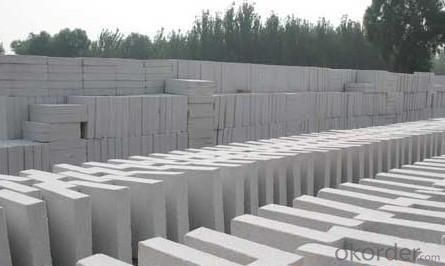
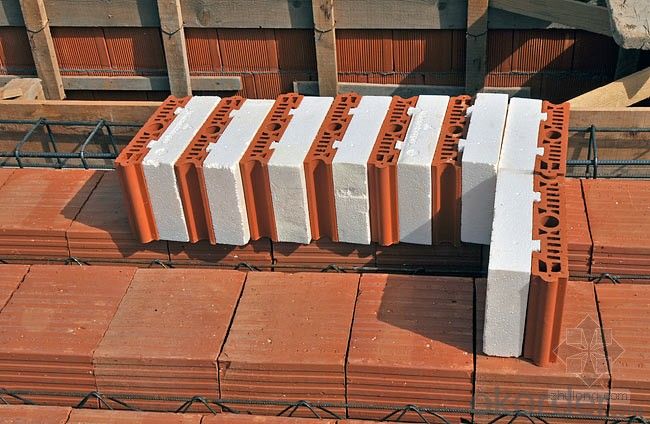
Common problem solution
1. What products do you have?
We have all kinds of refractory bricks, refractory casting materials, mortar, cement, ceramic fiber products, etc..
Or you can browse our products to choose what you need.
2. How to control product quality?
With strict quality control system throughout the material selection and production process, we have the quality of refractory materials and ceramic fiber products to meet customer requirements.
From the selection of raw materials, the quality of our control to start. The quality of the raw materials required for each batch of products in the use of the front line test. In the production process, through the quality control of workers, and then to each piece of classification, and through quality supervision and inspection.
3. Could you give me a brief introduction to the application of your product?
My Company is mainly engaged in steel, cement, glass, ceramics, petrochemical, electric power and other industries.
4. If I need you, what kind of information do you need?
In order to select the right products, we will provide us with information, such as the United States, technical data, order quantity, product applications, etc..
If you have any questions, please contact us.
- Q: What are the specifications of high strength diatomite insulating bricks?
- In view of the old and new concrete, steel structure, solid brick wall, hollow brick wall, compressed air brick wall and different brick wall, combined with the company installation patent method, it is suitable for the construction and installation of various types of wall. At the same time, it is also suitable for old house reconstruction. It has excellent outdoor weather resistance, color retention, alkali resistance, water resistance, scrub resistance, crack resistance, temperature resistance, waterproof, wear-resistant, collision resistant, and durable film, adhesion, and excellent anti mildew effect.
- Q: How do insulating fire bricks help to conserve energy?
- Insulating fire bricks help to conserve energy by providing excellent thermal insulation, reducing heat loss and improving energy efficiency. These bricks have low thermal conductivity, which means they are highly resistant to heat transfer. As a result, they prevent the escape of heat from furnaces, kilns, or other high-temperature applications, allowing for better heat retention and reduced energy consumption.
- Q: Are insulating fire bricks resistant to hydrofluoric acid?
- Hydrofluoric acid is a highly corrosive substance capable of attacking and dissolving various materials, including fire bricks, which lack resistance to it. Therefore, it is crucial to exercise utmost caution and employ suitable protective gear while dealing with this hazardous substance.
- Q: Can insulating fire bricks be used for insulation in foundries?
- Insulating fire bricks have the capability to be utilized for insulation purposes in foundries. These bricks are specially constructed to possess a high level of thermal resistance and a low level of thermal conductivity, rendering them exceptionally suitable for scenarios that necessitate insulation. In the context of foundries, where elevated temperatures are present, insulating fire bricks can be employed to line the walls, floors, and roofs, thus diminishing heat loss and enhancing energy efficiency. Furthermore, they contribute to maintaining a consistent temperature within the foundry, thereby ensuring uniform dispersion of heat while preventing heat loss to the surrounding environment. Moreover, owing to their lightweight nature and easy installation process, insulating fire bricks emerge as a pragmatic choice for insulation in foundries.
- Q: Can insulating fire bricks be used in foundries?
- Yes, insulating fire bricks can be used in foundries. They are commonly used as lining materials for various high-temperature applications, including foundries. Insulating fire bricks provide excellent thermal insulation, reducing heat loss and improving energy efficiency in the foundry process. Additionally, they have good resistance to thermal shock and can withstand the extreme temperatures and harsh conditions often found in foundry environments.
- Q: Can insulating fire bricks be used in the construction of ovens or kilns for pottery?
- Yes, insulating fire bricks can be used in the construction of ovens or kilns for pottery. These bricks are designed to withstand high temperatures and provide excellent insulation, making them suitable for creating a stable and efficient heat environment required for pottery firing.
- Q: Can insulating fire bricks be cut or shaped to fit different spaces?
- Yes, insulating fire bricks can be cut or shaped to fit different spaces. Insulating fire bricks are made from lightweight materials that can be easily cut or shaped using common tools such as saws, knives, or rasps. This allows for customization and precise fitting in various spaces, including fireplaces, kilns, furnaces, and other high-temperature applications. It is important to remember, however, that proper safety precautions should be taken when cutting or shaping insulating fire bricks, as they may produce dust or debris.
- Q: Can insulating fire bricks be used in drying ovens?
- Yes, insulating fire bricks can be used in drying ovens. These bricks are designed to withstand high temperatures and provide insulation, making them suitable for use in ovens where drying processes occur. They help to maintain a consistent and efficient heat distribution, ensuring effective drying of the materials inside the oven.
- Q: Can insulating fire bricks be used as a backup insulation in refractory linings?
- Yes, insulating fire bricks can be used as a backup insulation in refractory linings. Insulating fire bricks are designed to have low thermal conductivity, which makes them effective in reducing heat transfer in high-temperature applications. Their insulating properties make them ideal for use as a backup insulation layer in refractory linings, helping to further reduce heat loss and improve overall energy efficiency. Additionally, insulating fire bricks are lightweight, which makes them easier to handle and install compared to other refractory materials. However, it is important to consider the specific requirements of the application and consult with a refractory engineer to ensure that insulating fire bricks are suitable for the specific conditions and performance requirements of the refractory lining.
- Q: Can insulating fire bricks be used in heat exchangers?
- Yes, insulating fire bricks can be used in heat exchangers. These bricks are designed to have excellent thermal insulation properties, making them suitable for applications where heat needs to be contained or transferred efficiently. Heat exchangers rely on the efficient transfer of thermal energy, and insulating fire bricks can help in reducing heat loss or gain in these systems, improving their overall efficiency.
Send your message to us
Insulating Fire Brick - Mullite Jm 31 Refractory Brick
- Loading Port:
- Shanghai
- Payment Terms:
- TT OR LC
- Min Order Qty:
- 20 m.t.
- Supply Capability:
- 20 m.t./month
OKorder Service Pledge
OKorder Financial Service
Similar products
Hot products
Hot Searches
Related keywords




